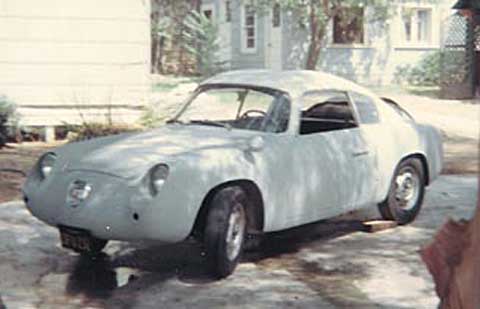
A Zagato in the closet
Bill Henry called me at Automech. We met a couple of weeks earlier during a Riverside SCCA weekend. He had stopped by the shop and admired my bright turquoise Mini, with the ivory stripe to match its wheels. Now he was proposing a trade. An even trade for pinks. My Mini was only an Austin 850, but I had installed a BMC A-Series comp head and a pair of 1.5-inch SU carbs from an MGA. With the help of a local BMC wizard we had set-up the big carbs to feed the 850 pistons. It worked brilliantly. The morning I re-torqued the head I loaded my luggage and headed across 1500 miles of dust and heat to Houston, Texas — and back. I soloed and rallied the Mini and loved it, but…
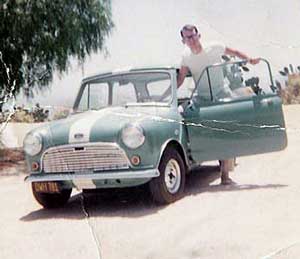
Bill said he had a nice Abarth 750 GT with a Fiat 600D engine that the SCCA wouldn’t let him race, and that’s what he really wanted to do. A double-bubble for my 850 Mini. Are you kidding? The following Saturday pinks changed hands and I drove from the north end of the San Fernando Valley out to Riverside in my very own Italian exotic.
It was gray primer over splintered white enamel. There was not a complete two-inch section of paint on the entire car. I started sanding. It was soon obvious that a lightweight Zagato body is a thin aluminum support core over which a slurry of sculptural material is applied and from which a beautiful form is finally carved, primed and painted. One might suppose that an unprotected life in the California desert environment is unforgiving to the various soft materials involved. Southern California is 40-50° nearly every night all year long and 80-100° every day with no clouds to shade the paint during daylight hours.
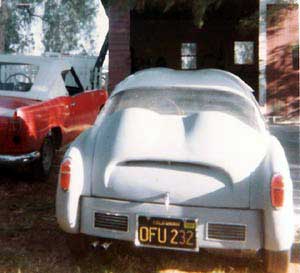
I worked for weeks, block-sanding and digging out cracks and trying to reform the double bubble form with the thinnest layer of putty I could manage. Over it all I spray-canned more gray primer and began to think of how easy the engine rebuild would be when I finally go to it.
John Rich, the Glendale Fiat / Abarth guru, became a good friend. We were on the phone twice a week for several months as I began to tweek the 600D into a sports car engine. First the block was cleaned and the two sets of sandwiched cylinders over-bored from the paired walls out ‘til the water jacket side became translucent. Matching alloy pistons that created a 10:1 ratio and included an offset for the odd bore centers were attached to the stock rods. After years of Fiat racing John suggested we leave the standard crank because it would flex a little when the hardened Abarth crank would simple explode under stress. A nearly-race cam and a 32mm single-barrel Weber gave the little engine horsepower at 8,500 revs, so once installed between the gearbox and the steel Fiat rear support box, it was twisted somewhere near that range every day. It never leaked and it never broke.
______________________________________________________
If you are enjoying this article, why not consider a donation to VeloceToday? Click here for details..it’s easy!
______________________________________________________
But it also never started on its starter motor — ever. For the following 18 months it started with a coast down my steep driveway every morning and an end-of-day run-and-bump in second gear for the drive home from work. At the time Riverside was awash in hot rod VW solo two cars that would blow the Abarth into the weeds. Being exotic had its limitations.
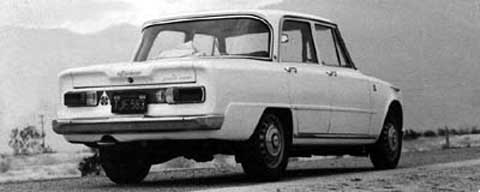
As I have written, I got my draft notice on a Wednesday after making a deal with Harry Morrow of Autobooks to buy his Ferrari 195 coupe for $1500. The plan was, once the loan money had changed hands the Abarth would be sold to clear that account. The Riverside County Draft Board changed the course of events. After securing a two-year place in the Navy Reserve I called John Rich. He agreed to take the Abarth as part trade for a new Alfa Romeo Giulia Super. As it transpired John flew to San Francisco and collected the first Super in California and drove it to Glendale for me. When I delivered the Abarth I described the starting ritual. John called for a mechanic to bring a floor jack and put it under the center of the steel box rear engine support. He had noticed a small crack beside the lid latch. With a little pressure under the center of the support he stepped inside and pulled the starter lever and the engine spun and lit immediately. He then suggested the mechanic bring a small welder and run a bead over the crack. Starting problem resolved for the next owner.
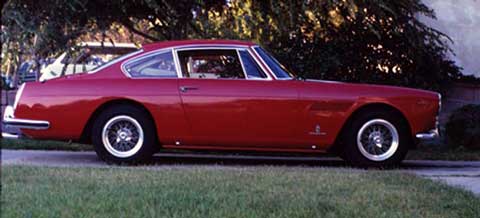
Within a week of my return from WestPac, The Giulia Super became a Ferrari 250 GTE as our family car. As if to underscore my ex-military wisdom, its engine blew several sets of rings on the SECOND day. It took several months for the fresh engine to be completed, during which time I was repeatedly reminded how wonderful the Giulia Super had been. Within a couple of years the GTE became a Morris Cooper S Mk II and I went in search of the hot rod VWs. At the end of the day I followed Bill Henry. I just wanted to go racing.
Hmmm….I wonder how many others of us started out with Minis as our first car? Is this like some kind of secret handshake?
Mary Ann, My 850 Mini followed two hot rod Fords, a Hillman Husky and an Olds Cutlass coupe. The Mini brought real fun to the game.
For ‘pinks’?
Dave, I’m a life-long Fiat lover but have been ouy of the loop for some time. I’ve recently come acreoss someone trying to restore a Viotti body 600 coupe (in the bay area). Since I owned one in the 60’s, I got interested. This led me to think about John Rich. Do you know if he is still around? If he is, any contact info?
Ken.
P.S. My Viotti only started the way your Abarth did. Ahh!! Memories!!
Just a note to let you know how much I enjoyed your article. I am Jo Rich, the
wife of John Rich, with so many memories of the Fiat/Abarth. John really really
loved the vehicles and put his heart and soul into everything associated with them.
Unfortunately has passed on. Love to hear from anyone out there.